| Corcoran Technical Trading Patterns for April 17 |
| By Clive Corcoran |
Published
04/17/2008
|
Stocks
|
Unrated
|
|
|
|
Corcoran Technical Trading Patterns for April 17
There were several suggestions in yesterday's trading that the tide is turning in terms of the intermediate term outlook for not only equities but also bonds. Corporate earnings are proving to be better than many had feared and there is more evidence that the financials could be making a "triple bottom". I shall repeat the chart for the Midcap Index that I showed earlier this week which suggested not only that last Friday's sell-off was overdone on the S&P 500 index, but also signified a transition point for the overall market.
The S&P 400 Midcap (^MID) index rallied off the support of the 50-day EMA and has moved up decisively towards the 200-day EMA as anticipated. The rapidity of the move up to the 200-day EMA, and the fact that we hit the level almost exactly, illustrates how reliable these moving average targets can be, but as the chart reveals the index faces a stiff hurdle in the vicinity of 825 from the chart resistance line drawn as well as the 200-day EMA. Equity markets could well pause and digest this week's gains but unless there is a more ominous development in the financial sector there is a good chance that the S&P 500 (^SPC) is headed towards the 1415 level that I have been targeting.
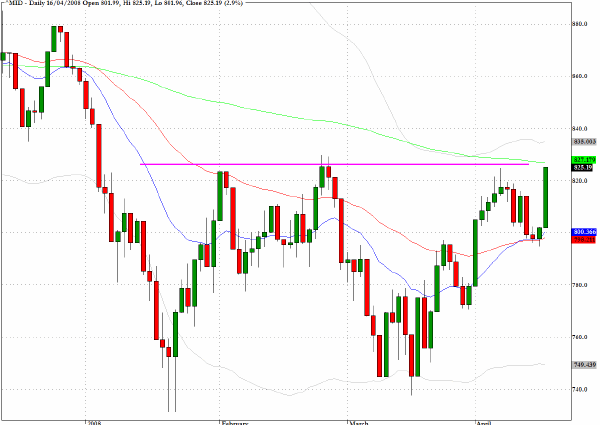
Another development that belies the gloom and doom being expressed amongst many commentators about the severity of the recessionary forces within the US economy was the break above 5000 for the Dow Jones Transportation index (^DJT). I am struck by the remarkable dissonance between the way that fund managers are behaving (bullishly) and the continued talk about the most serious hurdles since the Great Depression etc.
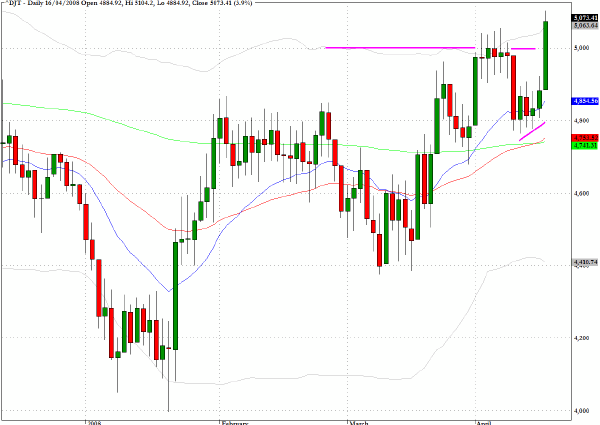
The utilities sector also pushed above a key resistance level and the sector fund, UTH, which was highlighted in Monday’s commentary performed as expected with a break away from the ascending wedge pattern.

Even more evidence that asset allocators are re-aligning their big picture view is to be found in the continuing sell-off at the long end of the yield curve. Yields on the thirty year Treasury bond moved up another twelve basis points and finished above 4.5% yesterday for the first time since early March.
Factors that are driving this sell-off probably have more to do with the waning of the safe haven mentality that prevailed throughout March than outright fear that, if the slowdown is not as severe as feared, then inflationary factors could be more troubling for the Fed, although this is undoubtedly another factor in the mix.
Further evidence that the asset re-alignment process may hit a minor speed bump is the fact that the yields have backed up close to a level between 4.6% and 4.7% where there has been strong demand for the longest maturity government bond.
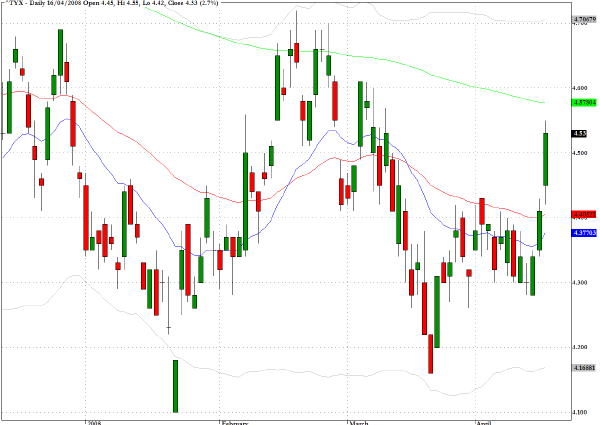
American Electric Power (AEP) is one breakaway candidate on the long side.
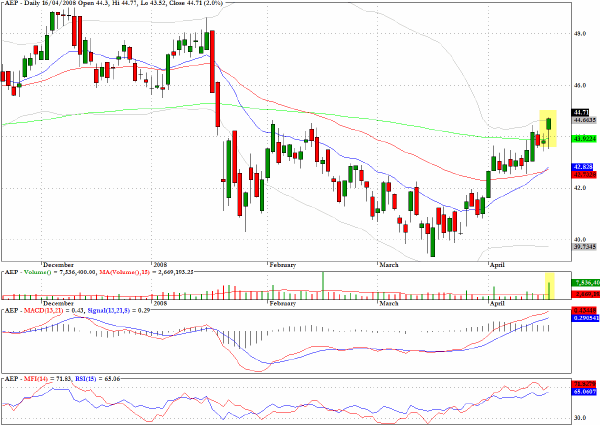
The chart for Dryships (DRYS) also shows a breakout and there seems more capacity for further immediate progress.
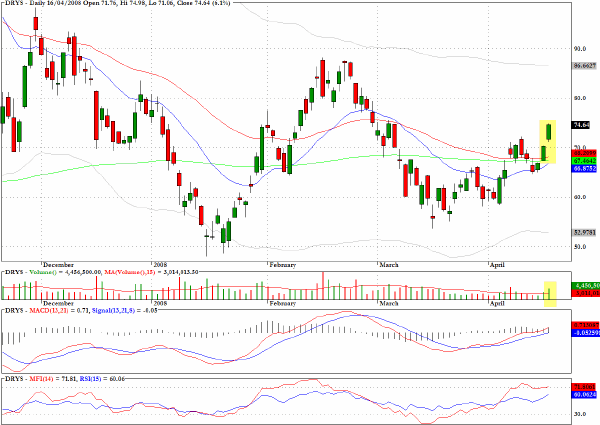
TJX looks appealing on the short side as it approaches $32.
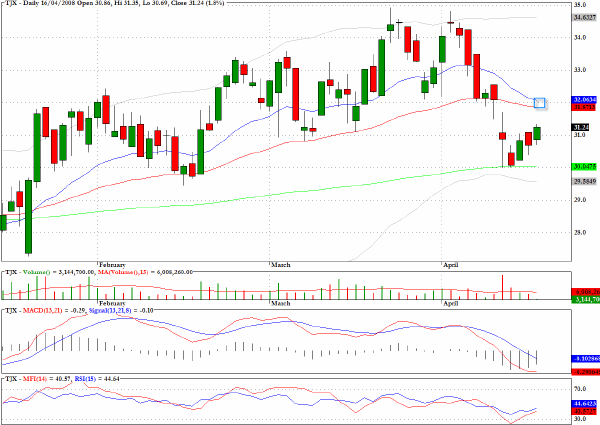
Clive Corcoran is the publisher of TradeWithForm.com, which provides daily analysis and commentary on the US stock market. He specializes in market neutral investing and and is currently working on a book about the benefits of trading with long/short strategies, which is scheduled for publication later this year.
Disclaimer
The purpose of this article is to offer you the chance to review the trading methodology, risk reduction strategies and portfolio construction techniques described at tradewithform.com. There is no guarantee that the trading strategies advocated will be profitable. Moreover, there is a risk that following these strategies will lead to loss of capital. Past results are no guarantee of future results. Trading stocks and CFD's can yield large rewards, but also has large potential risks. Trading with leverage can be especially risky. You should be fully aware of the risks of trading in the capital markets. You are strongly advised not to trade with capital.
|